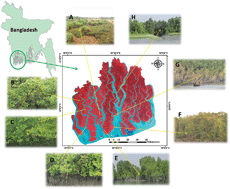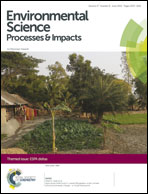Changes in mangrove species assemblages and future prediction of the Bangladesh Sundarbans using Markov chain model and cellular automata
Abstract
The composition and assemblage of mangroves in the Bangladesh Sundarbans are changing systematically in response to several environmental factors. In order to understand the impact of the changing environmental conditions on the mangrove forest, species composition maps for the years 1985, 1995 and 2005 were studied. In the present study, 1985 and 1995 species zonation maps were considered as base data and the cellular automata–Markov chain model was run to predict the species zonation for the year 2005. The model output was validated against the actual dataset for 2005 and calibrated. Finally, using the model, mangrove species zonation maps for the years 2025, 2055 and 2105 have been prepared. The model was run with the assumption that the continuation of the current tempo and mode of drivers of environmental factors (temperature, rainfall, salinity change) of the last two decades will remain the same in the next few decades. Present findings show that the area distribution of the following species assemblages like Goran (Ceriops), Sundari (Heritiera), Passur (Xylocarpus), and Baen (Avicennia) would decrease in the descending order, whereas the area distribution of Gewa (Excoecaria), Keora (Sonneratia) and Kankra (Bruguiera) dominated assemblages would increase. The spatial distribution of projected mangrove species assemblages shows that more salt tolerant species will dominate in the future; which may be used as a proxy to predict the increase of salinity and its spatial variation in Sundarbans. Considering the present rate of loss of forest land, 17% of the total mangrove cover is predicted to be lost by the year 2105 with a significant loss of fresh water loving mangroves and related ecosystem services. This paper describes a unique approach to assess future changes in species composition and future forest zonation in mangroves under the ‘business as usual’ scenario of climate change.


 Please wait while we load your content...
Please wait while we load your content...